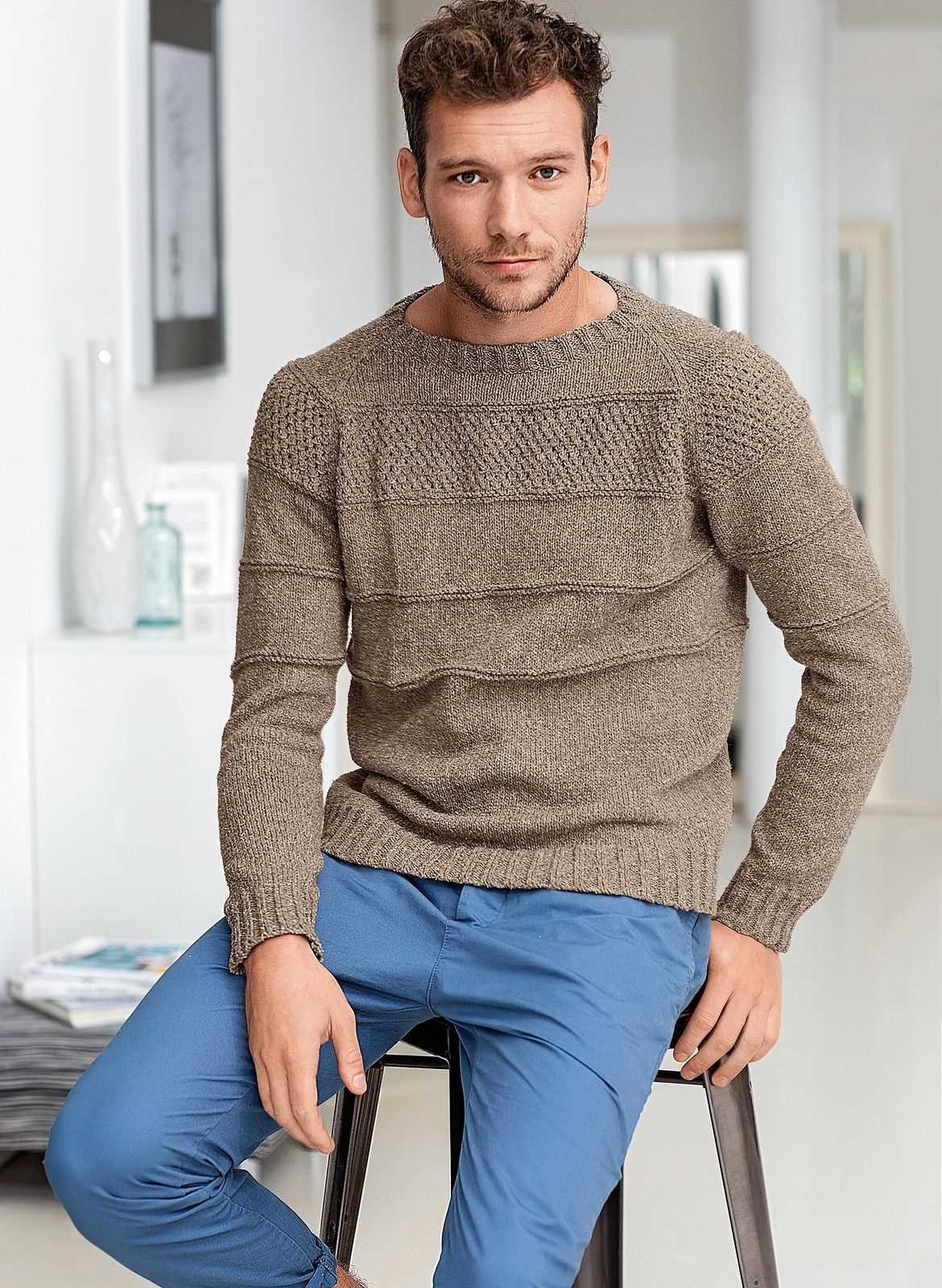
Knitting is a popular hobby that allows you to create unique and personalized garments. One of the most popular items to knit is a sweater. Sweaters are versatile and can be worn in both casual and formal settings. However, finding a knitting pattern that suits your style and skill level can be a challenge. If you’re a beginner or looking for a simple pattern, this basic men’s sweater knitting pattern is perfect for you.
This pattern is designed to be easy to follow and suitable for knitters of all levels. It features a classic crew neck and ribbed cuffs and hem, making it a timeless piece for any wardrobe. The pattern uses basic knit and purl stitches, so even if you’re new to knitting, you’ll be able to create a beautiful sweater.
To get started, you’ll need a few supplies, including the recommended yarn, knitting needles, and a tapestry needle. The pattern includes measurements and instructions for a range of sizes, so you can customize the sweater to fit perfectly. Whether you’re knitting for yourself or making a thoughtful gift for someone else, this basic men’s sweater knitting pattern is sure to be a hit.
Choosing the right yarn

When it comes to knitting a basic men’s sweater, choosing the right yarn is essential. The type and weight of the yarn you select will greatly impact the overall look and feel of the finished garment.
Fiber content: The first consideration when choosing yarn is the fiber content. For a classic mens sweater, wool is an excellent choice due to its warmth, durability, and natural elasticity. Other options include blends of wool and synthetic fibers, which can offer added strength and ease of care.
Weight: Another important factor to consider is the weight of the yarn. The pattern may specify a specific weight, but it is also important to think about the desired drape and thickness of the sweater. A worsted weight yarn is a common choice for sweaters as it provides a good balance between warmth and stitch definition.
Texture and color: The texture and color of the yarn can also greatly impact the final look of the sweater. Smooth, plied yarns can highlight stitch patterns and offer a clean, polished finish. Variegated or tweed yarns can add visual interest and depth to the sweater. It is important to consider the wearer’s preferences and the intended occasion when selecting the yarn’s color.
Price and availability: Lastly, it is important to consider the price and availability of the chosen yarn. Some specialty yarns may be more expensive or harder to find, while others may be more budget-friendly and readily available. It is important to strike a balance between the desired yarn qualities and the practicality of the project.
In conclusion, when choosing yarn for a basic men’s sweater, consider the fiber content, weight, texture, color, and price and availability. By carefully considering these factors, you can select the perfect yarn to create a comfortable and stylish sweater.
Gathering the necessary materials

Before starting your knitting project, it’s important to gather all the necessary materials. Here is a list of items you’ll need to complete the basic men’s sweater:
- Yarn: Choose a yarn that is suitable for sweaters, such as medium-weight acrylic or wool yarn. Make sure to select the desired color for your sweater.
- Knitting needles: You’ll need a pair of knitting needles in the appropriate size for your selected yarn. Check the yarn label for needle size recommendations.
- Tape measure: A tape measure will be essential for taking accurate measurements of the wearer, ensuring the right fit for the sweater.
- Stitch markers: Stitch markers are helpful for marking specific points in your knitting, such as the beginning of a round or important stitch pattern changes.
- Tapestry needles: These needles are used for weaving in loose ends of yarn and seaming the sweater together.
- Scissors: A pair of sharp scissors will be necessary for cutting yarn and trimming any excess.
- Pattern guide: Have the basic men’s sweater knitting pattern on hand for reference throughout your project.
Gathering these materials before you begin will ensure that you have everything you need to complete your men’s sweater knitting project. Once you have everything ready, you can start working on your sweater with confidence.
Taking the measurements

Before you start knitting your basic mens sweater, it is important to take accurate measurements of the person who will be wearing it. This will ensure that the sweater fits perfectly and is comfortable to wear.
Here are the key measurements you will need to take:
- Chest circumference: Wrap a measuring tape around the fullest part of the chest, just under the arms. Make sure the tape is snug but not too tight.
- Shoulder width: Measure from the edge of one shoulder to the edge of the other shoulder, across the back. It is helpful to have the person stand with their arms relaxed by their sides.
- Sleeve length: Starting at the shoulder bone, measure all the way down to the desired sleeve length. This is typically measured from the shoulder to the wrist.
- Sweater length: Measure from the base of the neck down to the desired length of the sweater. This will determine where the sweater hits on the hips or waist.
Once you have these measurements, you can use them to determine the size of the sweater and make any necessary adjustments to the knitting pattern. It is always a good idea to add a little bit of ease for comfort, but be cautious not to make the sweater too loose or too tight.
Remember to write down the measurements so you can refer to them throughout the knitting process. Taking accurate measurements is the first step to creating a well-fitted and stylish mens sweater.
Understanding the pattern
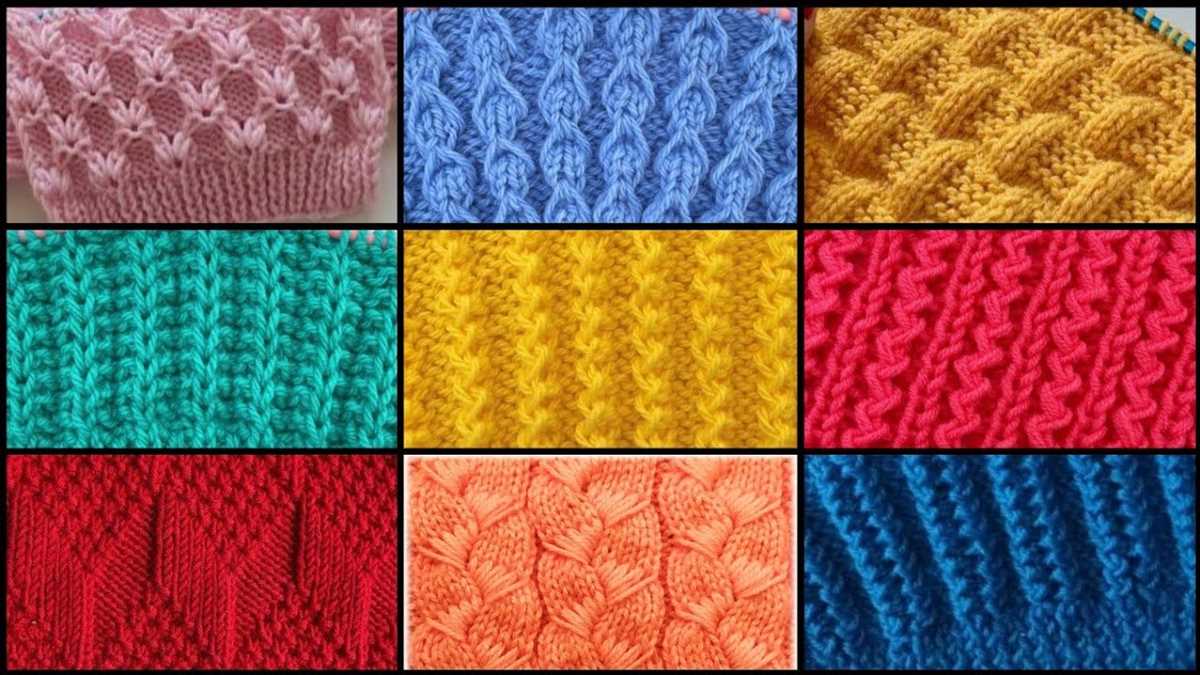
When starting a knitting project, it is essential to thoroughly understand the pattern before getting started. By doing so, you can avoid mistakes, confusion, and frustration throughout the process. The following steps will help you navigate through the basic men’s sweater knitting pattern.
Step 1: Read the instructions
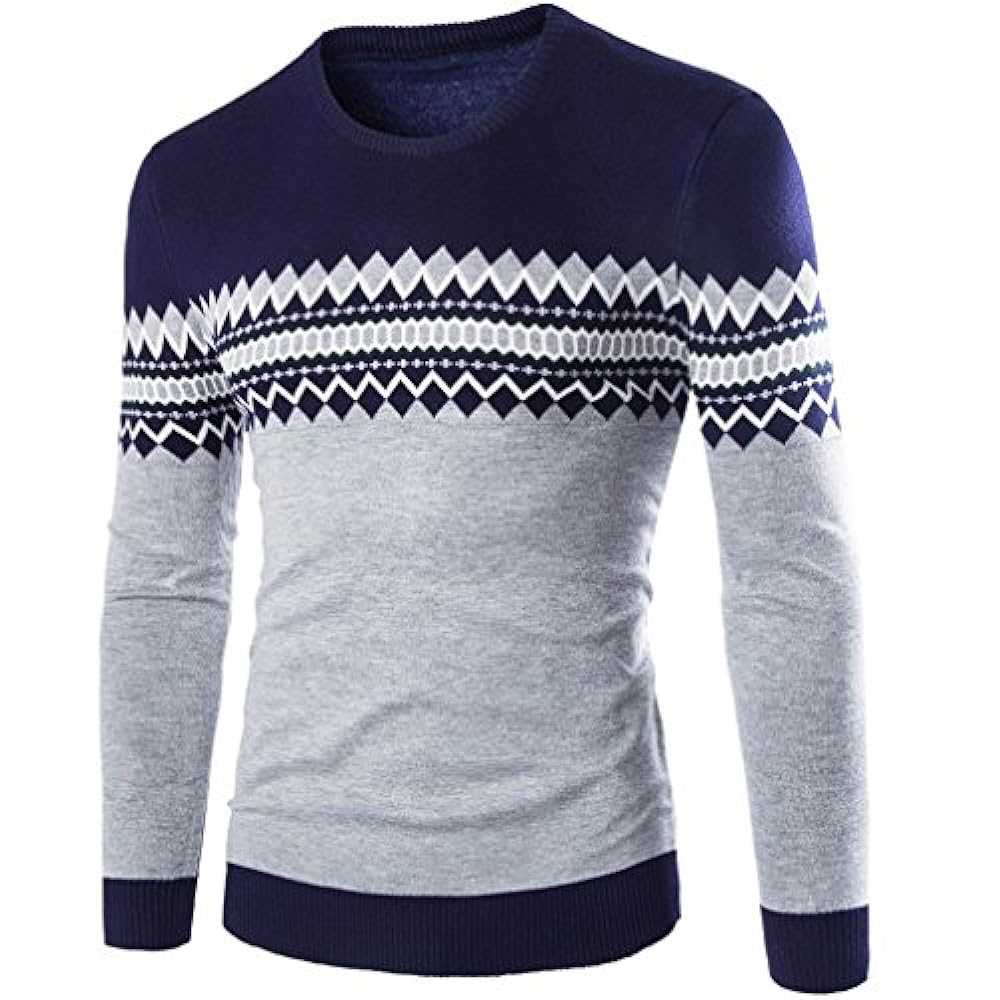
The first step is to carefully read the instructions provided in the pattern. Pay attention to any abbreviations, special stitches, or techniques mentioned. Make sure you understand the overall structure of the sweater and the order in which the different sections are knitted. It is also important to note the measurements and sizes provided to ensure you are knitting the appropriate size.
Step 2: Gather the necessary materials
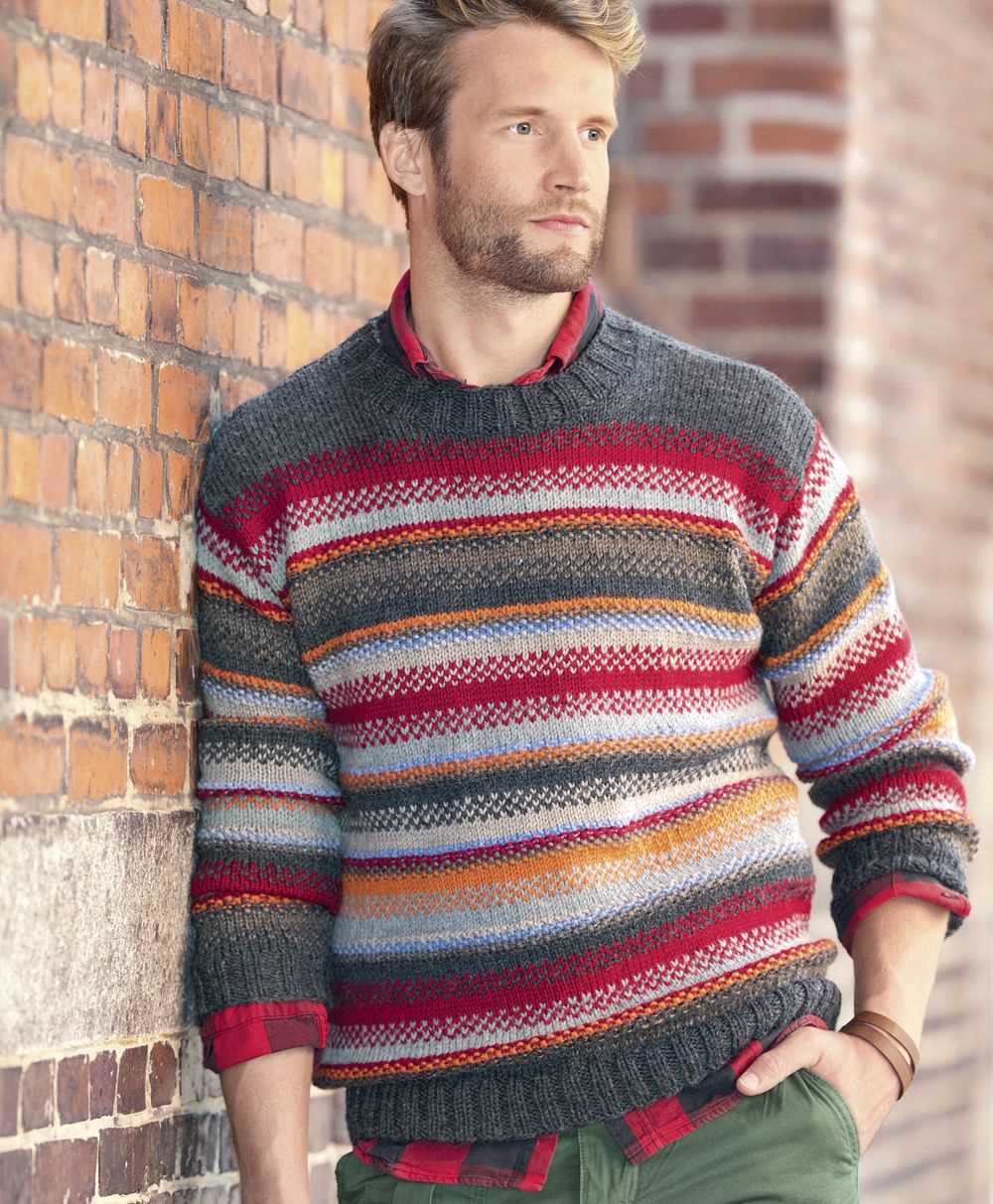
Before you begin knitting, make sure you have all the necessary materials as listed in the pattern. This typically includes specific yarn, needles, and any additional notions required. Check that you have the correct gauge, as stated in the pattern, to ensure your sweater will turn out the correct size.
Step 3: Follow the stitch count and pattern repeats
As you work through the pattern, it is crucial to follow the stitch count and pattern repeats specified. This will ensure that your sweater turns out with the correct dimensions and design. Pay attention to any markers or stitch holders indicated in the pattern and use them accordingly.
Step 4: Take accurate measurements throughout
To ensure a proper fit, it is important to take accurate measurements along the way. Check the length, width, and arm length as specified in the pattern, comparing them to your own measurements or the intended recipient’s. If adjustments are needed, make them accordingly.
By understanding and following the basic men’s sweater knitting pattern, you can create a beautiful and well-fitting garment that will be cherished for years to come. Happy knitting!
Casting on and knitting the ribbing
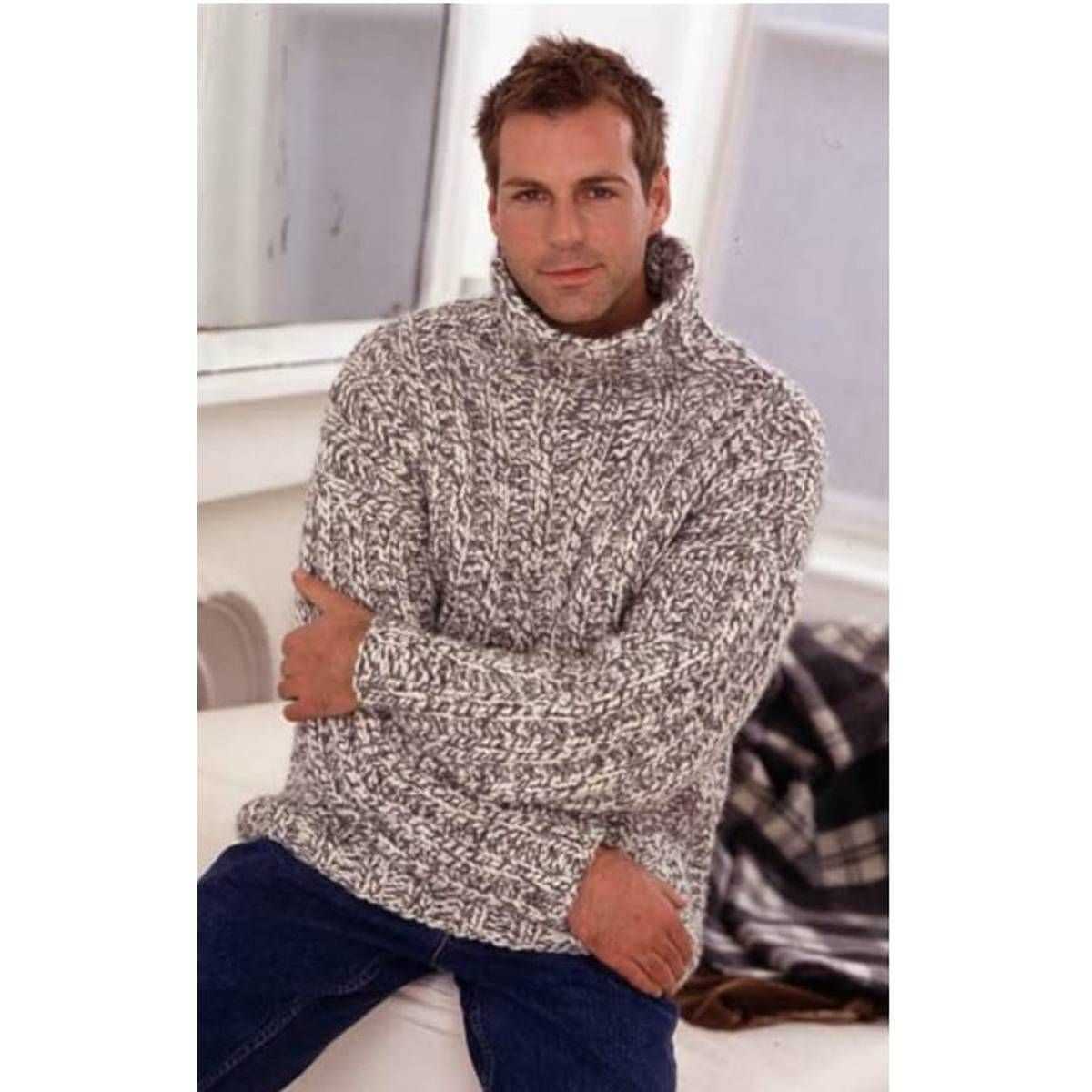
Before you can start knitting the basic men’s sweater, you will need to cast on and knit the ribbing at the hem, cuffs, and neckline. Ribbing is created by alternating knit and purl stitches, which creates a stretchy fabric that helps the sweater maintain its shape.
Casting on
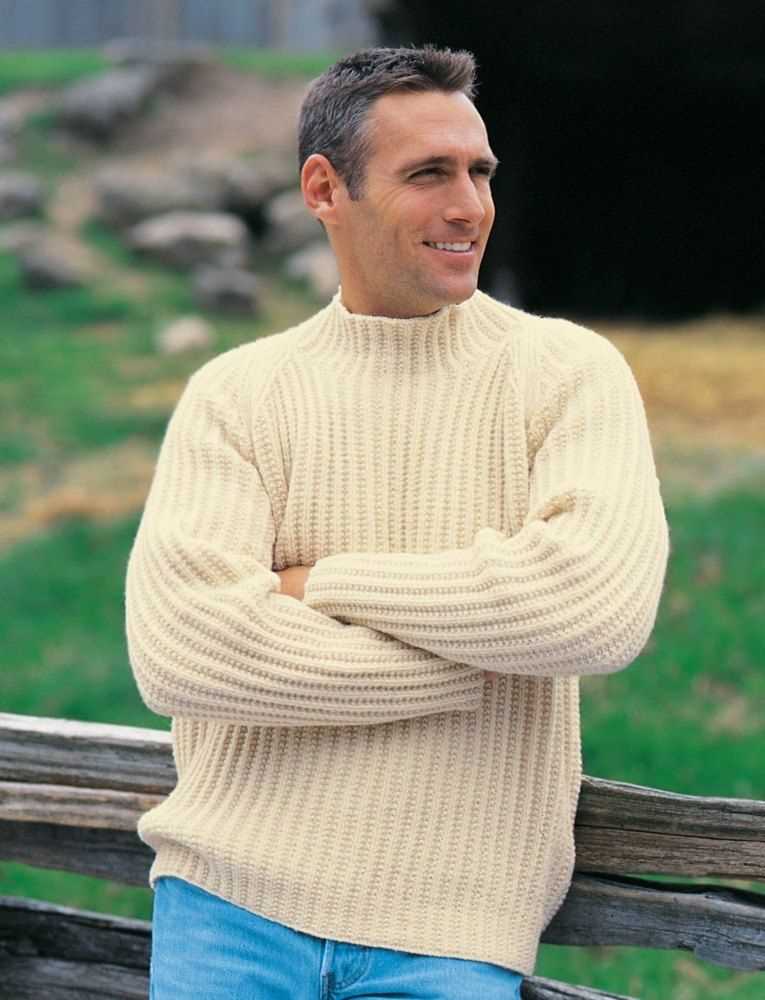
To begin, you will need to cast on the desired number of stitches using the long-tail cast-on method. This technique creates a neat and elastic edge for the ribbing. Start by making a slipknot and placing it on the left-hand needle. Then, hold the needle with the slipknot in your right hand and the empty needle in your left hand.
Next, insert the right-hand needle into the slipknot from left to right, making sure to loop the working yarn over the needle. Use your right thumb and index finger to hold the working yarn in place as you slip the new stitch onto the left-hand needle. Repeat this process until you have cast on the required number of stitches for the ribbing.
Knitting the ribbing
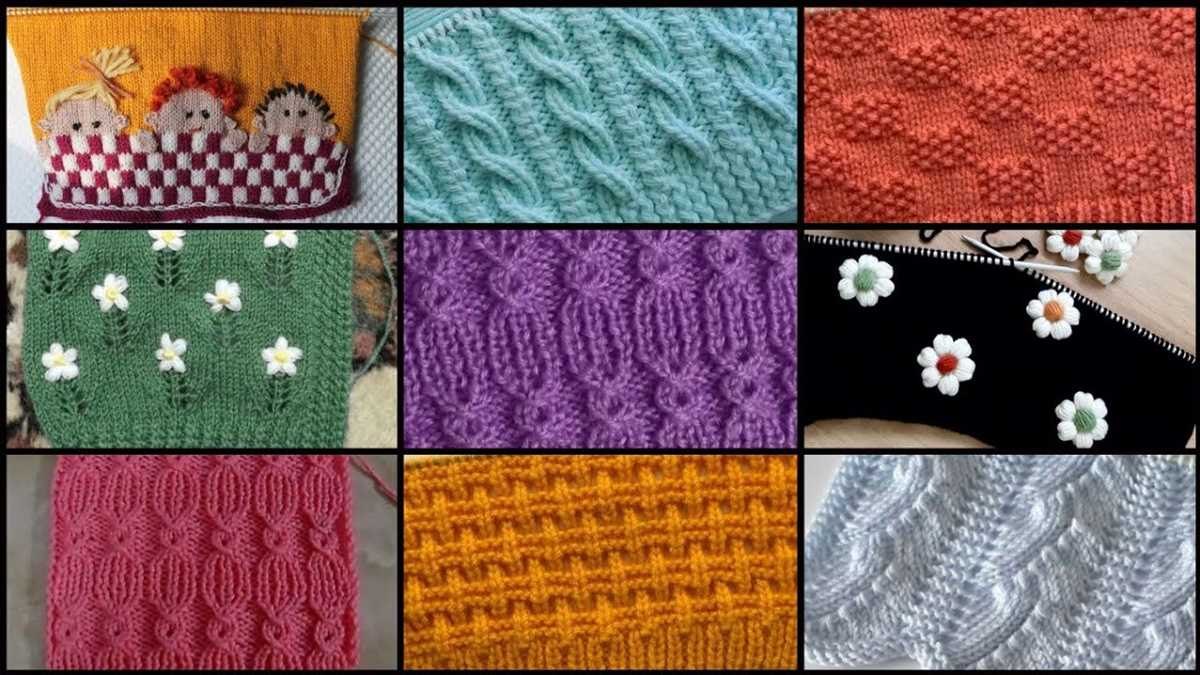
Once you have cast on the stitches, you can begin knitting the ribbing. For the hem, cuffs, and neckline, you will typically use a smaller needle size compared to the rest of the sweater to create a tighter ribbing. Check the pattern instructions for the recommended needle size.
To knit the ribbing, you will alternate between knit and purl stitches. The most common ribbing pattern is a 1×1 rib, which means you knit one stitch and purl one stitch, repeating this pattern across the row. This creates a stretchy and textured fabric. Other ribbing patterns, such as 2×2 rib or 2×1 rib, are also common and can be used to add variety to your sweater design.
Continue knitting the ribbing according to the pattern instructions until you have reached the desired length. Remember to maintain even tension and to keep your ribbing stitches neat and consistent. Once the ribbing is complete, you can move on to the main body of the sweater.
Knitting the body and sleeves

After finishing the ribbing, the next step in knitting the men’s sweater is to start working on the body. Using the main stitch pattern, continue knitting in the round until the desired length is reached. This will create a seamless and smooth fabric for the body of the sweater.
When the body is complete, it’s time to move on to the sleeves. The sleeves can be knitted in the round or flat, depending on personal preference. For knitting in the round, divide the total number of stitches for the sleeves evenly among several double-pointed needles or using the magic loop method with a circular needle.
Continue working in the desired stitch pattern and shaping the sleeves by decreasing stitches at regular intervals to create the curved shape. The number of decreases and their placement will vary depending on the size of the sweater and the desired fit. Refer to the pattern for specific instructions on decreasing and shaping the sleeves.
Once the sleeves are completed, they can be attached to the body of the sweater using a method called “seaming.” This involves sewing the edges of the sleeves to the corresponding armholes on the body, ensuring a secure and sturdy attachment. After seaming, the sweater is almost complete, with only the collar or neckline remaining to be knitted.
By following the pattern and carefully knitting the body and sleeves, you can create a beautifully fitted men’s sweater that is both stylish and comfortable. The process may require patience and attention to detail, but the end result will be a handmade garment that you can be proud of.
Shaping the armholes and neckline
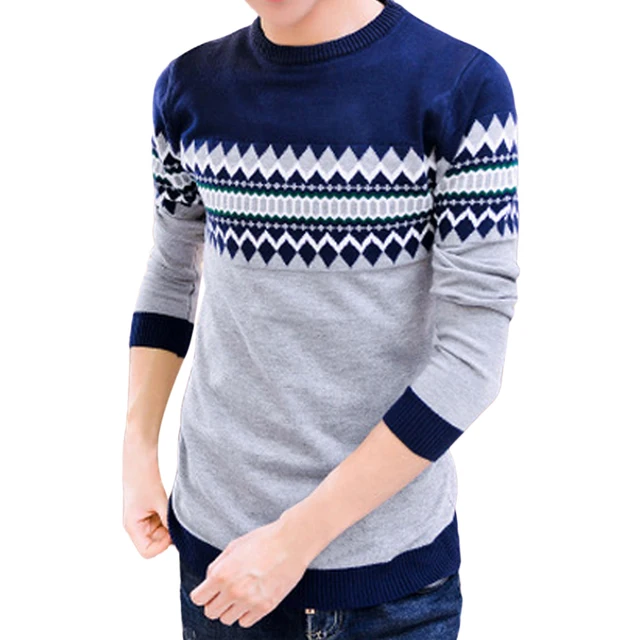
Once you have completed the main body of the sweater, it is time to shape the armholes and neckline. This is an important step in the construction of the sweater and will ensure a comfortable and flattering fit.
To shape the armholes, you will need to decrease the number of stitches on each side of the sweater. This can be done by knitting or purling two stitches together at regular intervals. The exact number of decreases will depend on your gauge and the desired size of the armholes.
For the neckline, you will need to create a shape that is comfortable and visually appealing. This is typically done by working short rows or by creating a series of decreases. Short rows involve knitting or purling a certain number of stitches and then turning the work before continuing. Decreases can be achieved by knitting or purling two stitches together, or by slipping stitches and then passing them over. The number and frequency of decreases will depend on the desired depth and width of the neckline.
It is important to follow the instructions provided in the pattern for shaping the armholes and neckline, as these details will vary depending on the specific design. Taking the time to properly shape these areas will ensure a professional-looking finished product that fits well and is comfortable to wear.
For a more detailed explanation on how to shape armholes and necklines, you can consult knitting resources such as books, online tutorials, or videos. These resources often include step-by-step instructions and diagrams to help you understand and execute the shaping techniques. With practice, you will gain confidence in shaping armholes and necklines, and be able to modify patterns to suit your own preferences.
Adding details like pockets or cables
Adding details such as pockets or cables to a basic men’s sweater knitting pattern can elevate the design and add visual interest. Pockets can be both decorative and functional, providing a place to store small items like keys or a phone. They can be added to either the front or the sides of the sweater, depending on personal preference.
Cables, on the other hand, are a popular knitting technique that creates textured designs and patterns. They can be used to add intricate details to the sweater, such as braided cables or diamond-shaped motifs. Cables can be incorporated into various parts of the sweater, such as the front panel, sleeves, or collar.
When adding pockets or cables to a men’s sweater, it is important to consider the overall design and fit. Pockets should be placed in a position that is flattering and practical, while cables should be evenly spaced and symmetrically placed. Taking accurate measurements and knitting a swatch beforehand can help ensure that the added details are properly proportioned and balanced with the rest of the sweater.
Additionally, it is important to follow the specific instructions provided in the knitting pattern for adding pockets or cables. The pattern may provide charts or written instructions for creating the desired details, and it is important to follow these instructions carefully to achieve the desired result.
Overall, adding details like pockets or cables to a basic men’s sweater knitting pattern can give the finished garment a unique and personalized touch. Whether for style or functionality, these details can make the sweater stand out and showcase the knitter’s skills and creativity.
Joining the seams

Joining the seams of a sweater is a crucial step in completing your knitting project. It is important to ensure that the seams are neat and strong, as they will determine the overall appearance and durability of the finished sweater.
Before joining the seams, you will need to block your knitted pieces to the correct measurements. This involves wetting the pieces and shaping them to the desired size and shape, then allowing them to dry completely. Blocking helps to even out any uneven stitches and ensure that the pieces fit together properly when seamed.
Steps to join the seams:
- Start by laying out your knitted pieces on a flat surface, right-side up, in the correct order and orientation according to the pattern instructions.
- Thread a tapestry needle with a yarn that matches the color and weight of your knitted pieces.
- Begin seaming by joining the shoulder seams first. Insert the needle under two adjacent stitches at the edge of one shoulder piece, then under two adjacent stitches at the edge of the other shoulder piece. Continue this way, working back and forth, until the shoulder seam is fully joined.
- Next, move on to the side seams. Starting at the bottom edge, line up the stitches of the front and back pieces and insert the needle under two adjacent stitches on each side. Work your way up, using the mattress stitch or whichever method is recommended in your pattern, until the side seams are fully joined.
- If your pattern includes sleeve seams, follow the same process to join the seams of the sleeves to the body of the sweater.
- Finally, weave in any loose ends of yarn to secure them and trim off any excess.
- You can then give your sweater a gentle blocking to ensure the seams lay flat and the sweater retains its shape. Follow the blocking instructions provided in your pattern or use your preferred blocking method.
- Once the seams are joined and the sweater is blocked, you can try on your finished piece and make any necessary adjustments or alterations.
By following these steps and taking the time to join your seams carefully, you can ensure that your knitted sweater will be a comfortable and stylish addition to your wardrobe.
Blocking and finishing the sweater
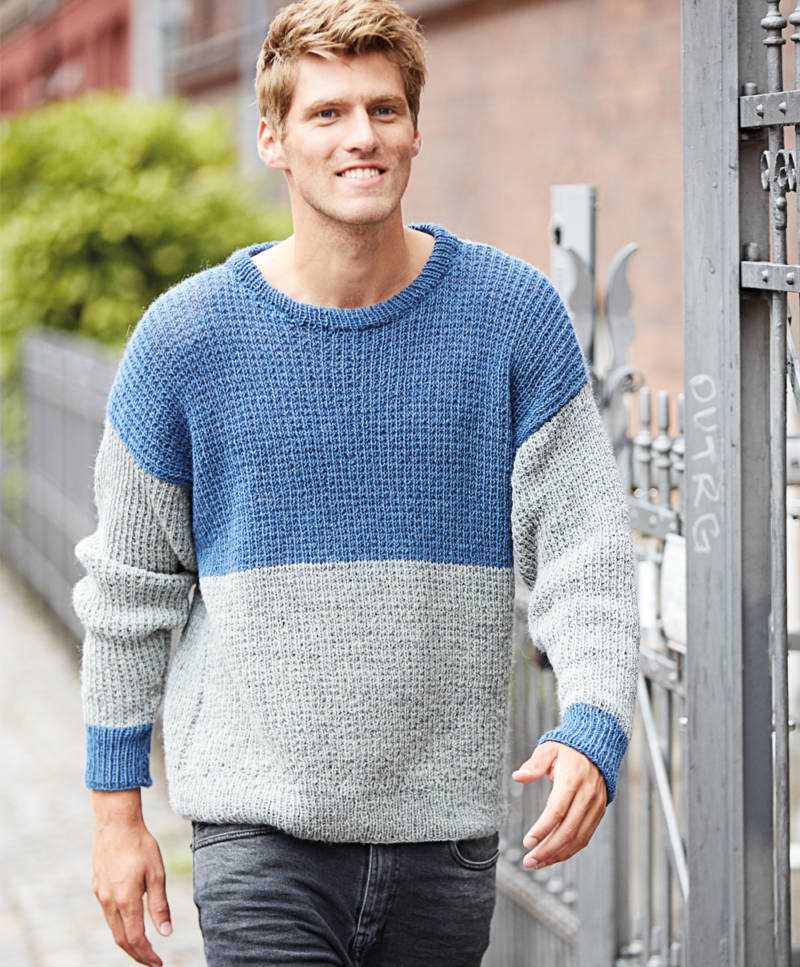
Once you have finished knitting the pieces of your sweater, you will need to block them to give your garment a professional finish. Blocking is the process of shaping and setting the knitted fabric to its desired size and shape. This step is essential to ensure that your sweater fits properly and has a polished look.
First, you will need to gather your materials, including blocking mats or towels, rustproof pins, and a spray bottle with water. Lay your sweater pieces flat on the mats or towels, making sure to adjust the fabric to the correct measurements. Use rustproof pins to secure the edges and corners of the pieces, ensuring they are stretched to the appropriate size.
Once your pieces are pinned in place, lightly spray them with water using the spray bottle. Be careful not to saturate the fabric, as this can cause stretching or distortion. Allow the pieces to dry completely before removing the pins. This will help set the shape and size of your sweater.
After blocking, it’s time to sew the pieces together. Use a tapestry needle and matching yarn to seam the shoulders, sleeves, and side seams. Take your time to ensure neat and secure stitching. Once the seams are complete, you can add any desired finishing touches, such as ribbed cuffs or a collar.
Finally, it’s time to try on your newly finished sweater! Check the fit and make any necessary adjustments before weaving in any remaining yarn ends. With proper blocking and finishing, your sweater will be ready to keep you warm and stylish for many seasons to come.
Troubleshooting common knitting issues

Knitting is a beautiful craft that allows you to create unique and cozy garments. However, it can sometimes be frustrating when you encounter common knitting issues. Understanding how to troubleshoot these problems will help you enjoy the process and create beautiful pieces. Here are some common knitting issues and their solutions:
Problem: Uneven tension

Uneven tension can result in a sweater with different stitch sizes which can affect the overall look of your garment. To fix this, ensure that you are consistently using the same tension throughout your knitting project. Take breaks if your hands are getting tired to avoid unintentionally tightening or loosening your stitches. Additionally, practicing proper hand positioning and holding the yarn consistently can help improve your tension.
Problem: Dropped stitches

It can be disheartening to discover a dropped stitch in your knitting project. To fix this, carefully examine your stitches to identify the dropped stitch. Once you have located it, use a crochet hook or a knitting needle to pick up the dropped stitch and secure it back onto the needle. Take your time and be patient to avoid further unraveling.
Problem: Twisted stitches
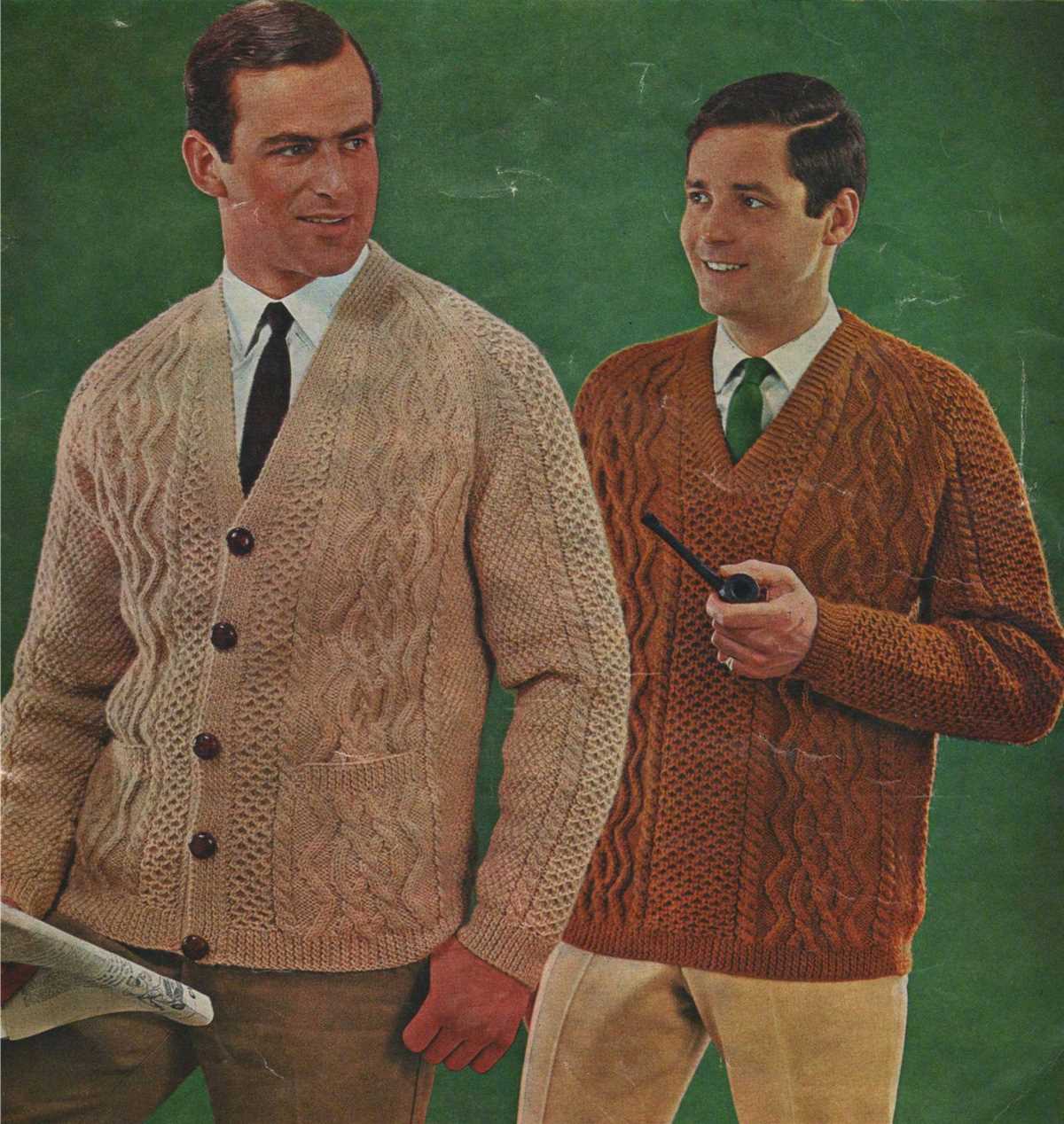
Twisted stitches can happen when you accidentally twist the stitch while knitting or purling. This can result in a twisted appearance that affects the overall look of your sweater. To fix this, pay close attention to your knitting technique and make sure to insert your needle into the stitch correctly. If you notice a twisted stitch, you can carefully unravel it and re-knit it in the correct orientation.
Problem: Uneven edges

Uneven edges can make your sweater look unprofessional and messy. This issue is often caused by unintentional yarn overs or dropped stitches at the beginning or end of a row. To avoid this, pay extra attention to the first and last stitches of each row and make sure to knit or purl them correctly. If you notice an uneven edge, you can use a crochet hook or a knitting needle to fix any dropped stitches and adjust the tension as needed.
By being aware of these common knitting issues and their solutions, you can overcome any challenges that may arise during your knitting projects. Remember to take your time, be patient, and enjoy the process of creating something beautiful with your knitting needles.
Customizing the pattern to fit your preferences
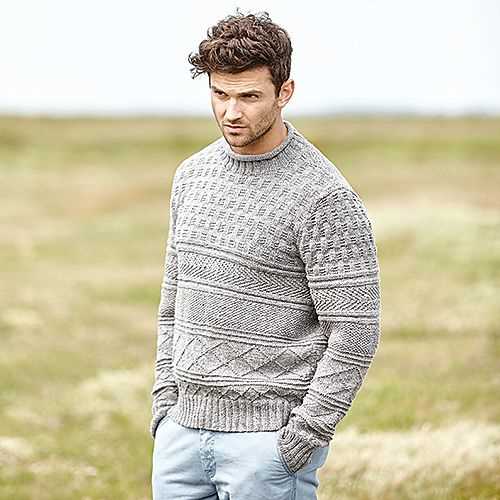
While the basic men’s sweater knitting pattern provides a great starting point, you may find that you want to make some adjustments in order to create a sweater that perfectly suits your style and preferences. Here are some tips for customizing the pattern:
- Adjust the size: The pattern provides instructions for a specific size, but you can easily adapt it to fit your measurements. Take some time to measure your chest circumference, sleeve length, and desired length of the sweater. Make adjustments to the pattern accordingly to achieve the perfect fit.
- Experiment with stitch patterns: The basic pattern usually features a simple stitch pattern, such as stockinette or ribbing. However, you can add interest to your sweater by incorporating different stitch patterns. Consider using cables, texture stitches, or lace patterns to create a unique design.
- Customize the neckline: The pattern may have a specific neckline, but you can modify it to suit your preferences. Whether you want a crew neck, V-neck, or a mock neck, you can adjust the pattern accordingly. Make sure to measure your neck circumference and follow instructions for shaping the neckline.
- Add personal details: Personalize your sweater by adding details that reflect your style. You can include pockets, contrasting color accents, or even custom embroidery. Get creative and make the sweater truly your own.
Remember, knitting is a versatile craft that allows for endless creativity and customization. Don’t be afraid to deviate from the pattern and make it your own. By customizing the basic men’s sweater knitting pattern, you can create a one-of-a-kind garment that is tailored to your preferences and fits you perfectly.